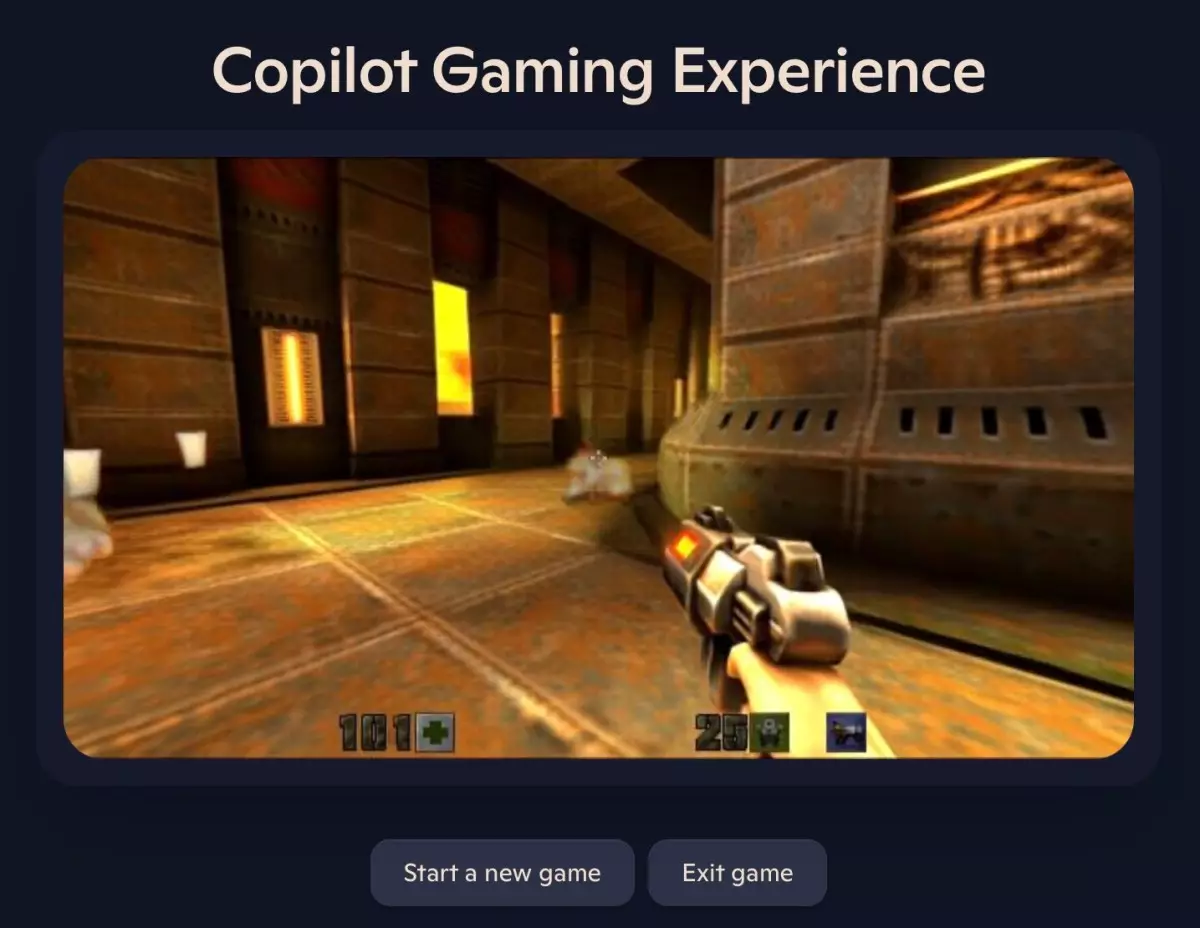In a bold move that demonstrates the evolving relationship between technology and gaming, Microsoft has launched a browser-based, playable rendition of the iconic game Quake II. This new initiative serves as a tech demonstration for the capabilities of Microsoft’s Copilot AI platform. However, it’s essential to approach this innovation with a critical lens, as the experience, while intriguing, falls short of what seasoned players might expect from a classic title.
Microsoft’s Muse family of AI models positions this gaming experience as an exploration rather than a fully realized game. Players can navigate a single level of Quake II for a limited time, typically measured in minutes, using their keyboard. On a surface level, this seems like a fascinating method to engage users and showcase technological advancements in artificial intelligence. However, a deeper dive reveals the inherent limitations that can dampen excitement and immersion.
The Illusion of Gameplay
The idea behind this demo is compelling: users can interact with the AI model, experiencing immediate responses to actions such as moving, jumping, and shooting. The developers were enthusiastic about their ability to create a semblance of gameplay, emphasizing that users can essentially “play inside the model.” Yet, this “interaction” transforms into more of a novelty than a genuine game experience.
Researchers noted that while players can replicate classic game mechanics—like shooting barrels or traversing the environment—the experience remains almost tangential to what Quake II represents. Missing are the nuances that define why players love video games. The limitations of the AI, such as fuzzy enemies and erratic health counters, strip away layers of immersion vital to the game’s identity. The AI’s notable struggle with object permanence complicates strategic gameplay further; objects disappear too quickly for players to engage meaningfully.
This lack of fidelity raises concerns. Are users experiencing a hollow version of their cherished memories? The excitement of nostalgia is instantly tempered by the reality that players are not engaged with a fully realized game but are instead operating within an imperfect simulation. As enchanting as the concept might be, it showcases how easily novelty can overshadow substance.
The Critique of AI-Driven Game Design
Industry voices are already weighing in on the implications of this demonstration. Notably, game designer Austin Walker expressed skepticism regarding Microsoft’s approach, highlighting a key misunderstanding in the integration of AI with gaming. Walker argues that the intricate craft behind games like Quake entails a deep interplay between code, design, and art, creating unique gameplay experiences replete with unexpected surprises.
Walker’s critique resonates as a sobering reminder that gaming is not merely about technology; it encompasses stories, artistry, and human experiences that cannot be replicated through AI alone. The technical brilliance displayed in the demo does not compensate for the absence of depth in gameplay. In seeking a path toward game preservation or making classic titles more “portable,” there appears to be a fundamental oversight regarding the soul of gaming and what really makes these experiences impactful.
The Future of Gaming: Merging AI with Authenticity
As we look ahead to the future of gaming, the challenge lies in balancing technological advancements with authenticity. While AI has the potential to revolutionize how games are created and consumed, it must enhance—not dilute—the player experience. The Quake II demo under Microsoft’s Copilot platform serves as a prime example of both the promise and peril that this technology can bring.
Rather than replace the rich history of gaming, the goal should be to preserve and evolve it, using technology as a means of enriching player experiences without diminishing the core attributes that make gaming delightful. Let’s harness the innovative capabilities of AI in a way that respects the artistry of game design, maintaining the essential nuances that make gameplay truly captivating while embracing a new era of possibilities. The balance of nostalgia and innovation will ultimately define the next chapter in the realm of video gaming. The narrative must prioritize player experience first, for only then can AI be the catalyst for genuine evolution in this beloved medium.

